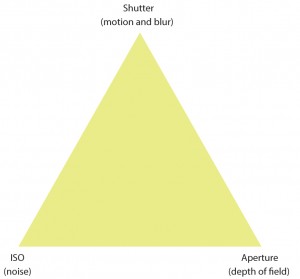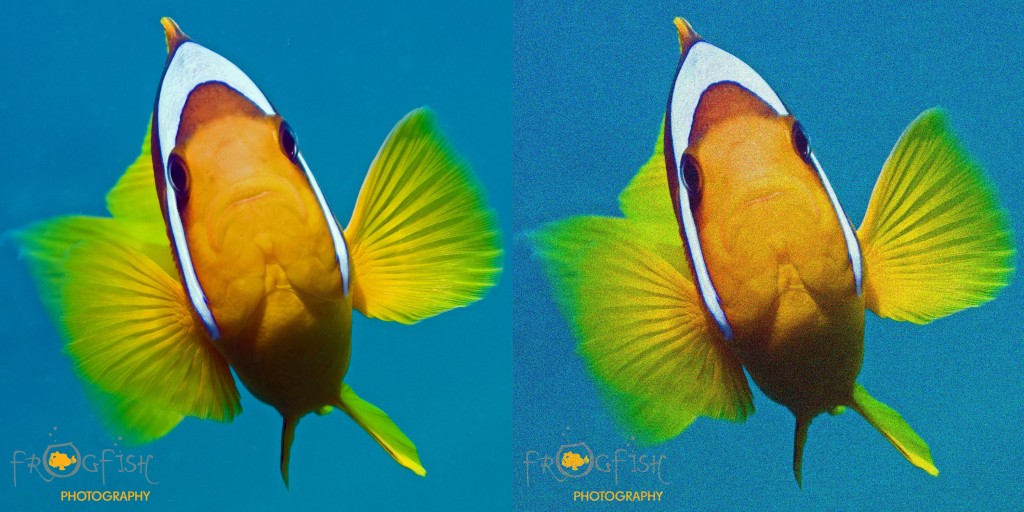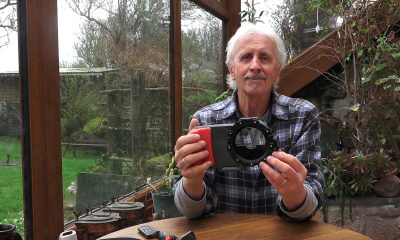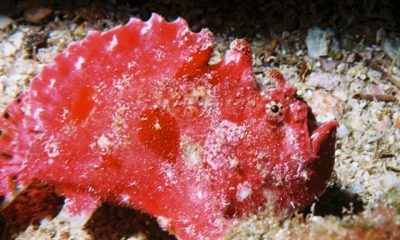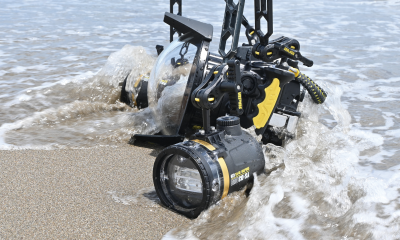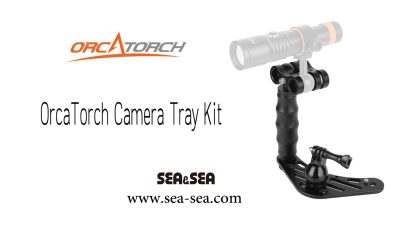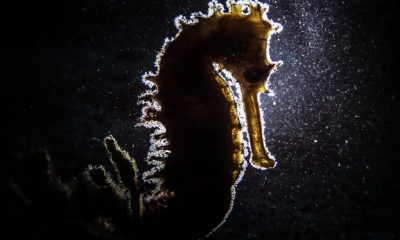News
Underwater Photography Essentials: Part 3
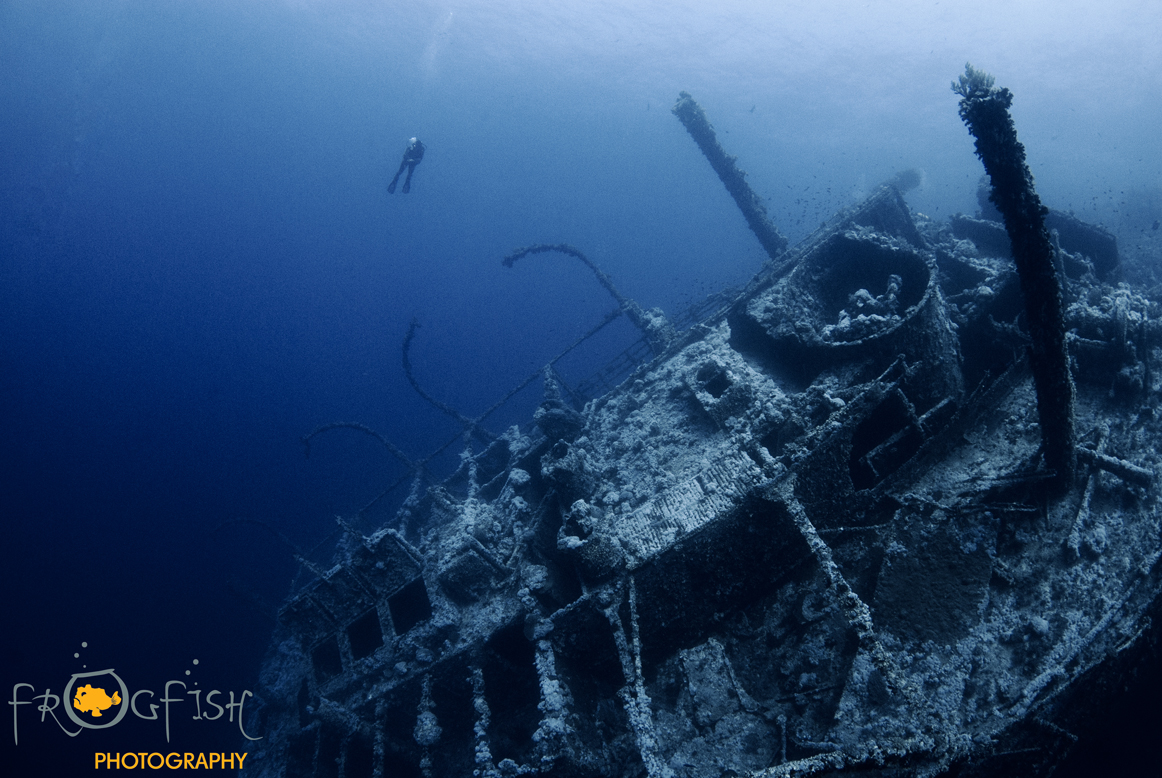
Tips, ideas and advice for budding underwater photographers
by Nick Robertson-Brown FRPS
Part 3: Getting to grips with your camera settings – ISO
Read Part 1 of Underwater Photography Essentials here.
Read Part 2 here.
The third element in controlling the exposure value is the ISO. The term ISO is an acronym for the International Standards Organisation which prescribed a common standard for the sensitivity of a film many years ago. The higher the ISO number, the greater the sensitivity to light; but it came at a price. As the sensitivity to light improves and the ISO number on the film gets higher, the lower the quality of the image becomes. With a high ISO film, the image looks grainy and hence the resolution is reduced. The same standard has been maintained in digital imagery, whereby the exposure value of a digital image will be the same as it is on a film camera, as long as all the settings are the same. There are, however, still penalties as you increase the ISO value. In much the same way as it did on film cameras, the image becomes grainy, but we refer to this as noise – and a noisy image has very restricted uses.
On the face of it, it would appear that increasing the ISO is a great way to increase the exposure value of your image with no major side-effects. Only a few years ago, using the ISO as part of the exposure triangle was restricted to changes between ISO 100 and ISO 800 (at best). Modern technology has come a long way in the last 4 to 5 years and on some cameras, mostly expensive ones, ISO values of 2500 can produce images with very little noise.
With the introduction of modern technology, the ISO setting is now a serious tool to be exploited underwater, as high ISOs are ideal for working in low light conditions. The ability of an individual camera at different ISOs will vary between manufacturers and camera models and it is important that you understand the limitations of your own camera so you know how far you can push the limits of the ISO setting. You can test this limit by taking a sequence of images into shadow and increasing the ISO on each shot. The low ISO image should look clean and black, whereas the high ISO image will look really noisy with hundreds of tiny red or blue dots which become clearly apparent when you zoom in. By taking a sequence of images, you can look at the effect as you increase the ISO, and you can decide how high an ISO value you are happy with. There is a certain amount of subjectivity in this, but it is what you think that is important.
Having the ISO set to the right value is still important, despite the advances in technology. Ideally, the default setting should be at your lowest ISO setting, which is usually 100 and this means your images will give the best resolution of your camera can produce. Whilst an image which you have taken at ISO 400 for example, may look as good as the one you took at 100, when you zoom in, and look really closely at it, you will appreciate the higher resolution of ISO 100.
One point I should make about using the ISO at high values, is that on certain images, the noise can actually work, possibly even enhancing the result. However, this is unusual, and increasing the ISO level should really only be used if reducing the shutter speed would induce motion blur or shake, and opening the f-stop would reduce your depth of field beyond the level you are comfortable with.
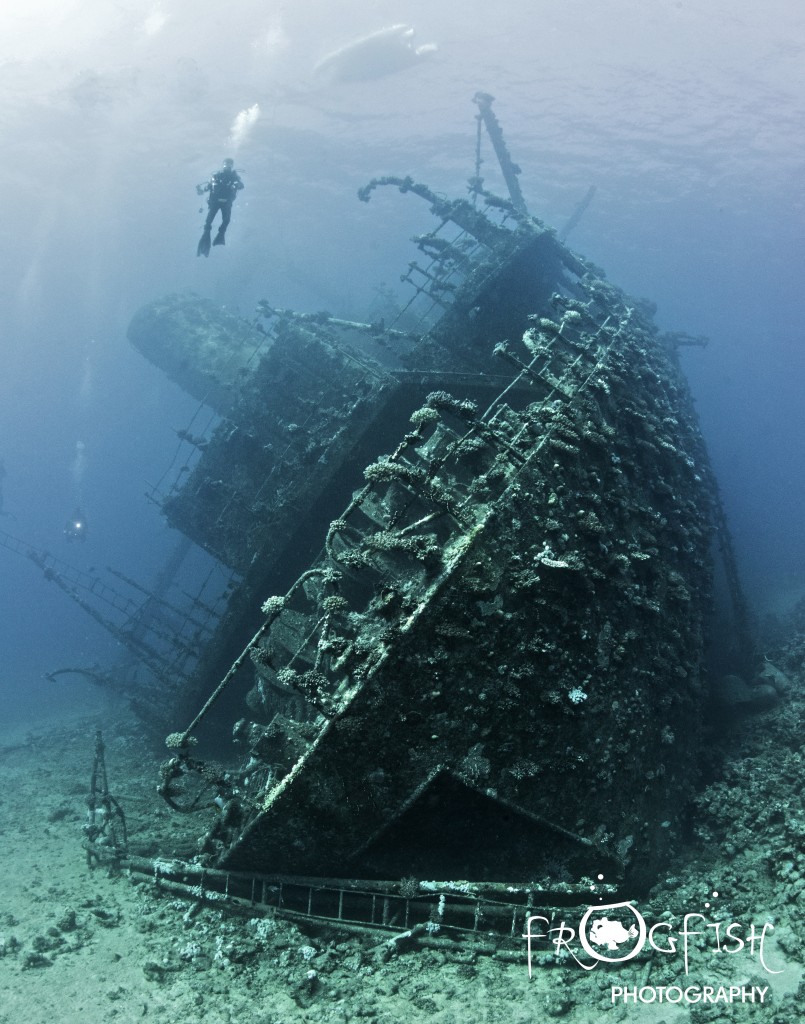
This image of the wreck of the Giannis D is shot with a high ISO (1250) on a Nikon D800, so whilst there is some noise, it suits a wreck shot.
Now that we have discussed all three factors that affect exposure control, pick up your camera, put it into manual, and start to experiment.
Whilst we are dedicated Nikon camera users, we found this useful tool on the Canon website and thought it was worth posting. You do not even need to get your camera out to see how ISO, Aperture and Shutter Speed interact – as you can give it a go on this handy web tool whilst sat at your computer:
www.canonoutsideofauto.ca/play
————————————————————————————————————————————————————
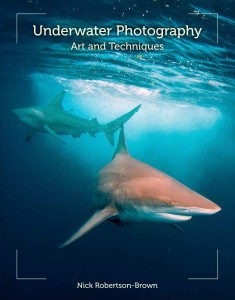 Do you want to learn more? You can pick up a copy of Nick’s book “Underwater Photography Art & Techniques” by clicking here. For a signed copy, click here.
Do you want to learn more? You can pick up a copy of Nick’s book “Underwater Photography Art & Techniques” by clicking here. For a signed copy, click here.
Underwater Photography Courses
Contact Nick for information on the Frogfish Photography Complete Underwater Photography Award, designed for 1:1 and small group sessions to improve your underwater photography at your pace.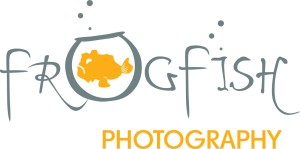
www.frogfishphotography.com | frogfishphotos@gmail.com | ![]() +44 (0)161 9177101
+44 (0)161 9177101
News
Dive Worldwide Announces Bite-Back as its Charity of the Year

Over the next 12 months, specialist scuba holiday company Dive Worldwide will be supporting Bite-Back Shark & Marine Conservation with donations collected from client bookings to any one of its stunning dive destinations around the world. The independently-owned operator expects to raise £3000 for the UK charity.
Manager at Dive Worldwide, Phil North, said: “We’re especially excited to work with Bite-Back and support its intelligent, creative and results-driven campaigns to end the UK trade in shark products and prompt a change in attitudes to the ocean’s most maligned inhabitant.”
Bite-Back is running campaigns to hold the media to account on the way it reports shark news along with a brand new nationwide education programme. Last year the charity was credited for spearheading a UK ban on the import and export of shark fins.
Campaign director at Bite-Back, Graham Buckingham, said: “We’re enormously grateful to Dive Worldwide for choosing to support Bite-Back. The company’s commitment to conservation helps set it apart from other tour operators and we’re certain its clients admire and respect that policy. For us, the affiliation is huge and helps us look to the future with confidence we can deliver against key conservation programmes.”
To launch the fundraising initiative, Phil North presented Graham Buckingham with a cheque for £1,000.
Visit Dive Worldwide to discover its diverse range of international scuba adventures and visit Bite-Back to learn more about the charity’s campaigns.
MORE INFORMATION
Call Graham Buckingham on 07810 454 266 or email graham@bite-back.com
Gear News
Scubapro Free Octopus Promotion 2024

Free Octopus with every purchase of a SCUBAPRO regulator system
Just in time for the spring season, divers can save money with the FREE OCTOPUS SPRING PROMOTION! Until July 31st SCUBAPRO offers an Octopus for free
with every purchase of a regulator system!
Get a free S270 OCTOPUS with purchase of these combinations:
MK25 EVO or MK19 EVO with A700
MK25 EVO or MK19 EVO with S620Ti
MK25 EVO or MK19 EVO with D420
MK25 EVO Din mit S620Ti-X
Get a free R105 OCTOPUS with purchase of the following combinations:
MK25 EVO or MK19 EVO with G260
MK25 EVO or MK17 EVO with S600
SCUBAPRO offers a 30-year first owner warranty on all regulators, with a revision period of two years or 100 dives. All SCUBAPRO regulators are of course certified according to the new European test standard EN250-2014.
Available at participating SCUBAPRO dealers. Promotion may not be available in all regions. Find an authorized SCUBAPRO Dealer at scubapro.com.
More information available on www.scubapro.com.
-

 News3 months ago
News3 months agoHone your underwater photography skills with Alphamarine Photography at Red Sea Diving Safari in March
-

 News3 months ago
News3 months agoCapturing Critters in Lembeh Underwater Photography Workshop 2024: Event Roundup
-

 Marine Life & Conservation Blogs3 months ago
Marine Life & Conservation Blogs3 months agoCreature Feature: Swell Sharks
-

 Blogs2 months ago
Blogs2 months agoMurex Resorts: Passport to Paradise!
-

 Blogs2 months ago
Blogs2 months agoDiver Discovering Whale Skeletons Beneath Ice Judged World’s Best Underwater Photograph
-

 Gear Reviews2 weeks ago
Gear Reviews2 weeks agoGEAR REVIEW – Revolutionising Diving Comfort: The Sharkskin T2 Chillproof Suit
-

 Marine Life & Conservation2 months ago
Marine Life & Conservation2 months agoSave the Manatee Club launches brand new webcams at Silver Springs State Park, Florida
-

 Gear Reviews3 months ago
Gear Reviews3 months agoGear Review: Oceanic+ Dive Housing for iPhone


